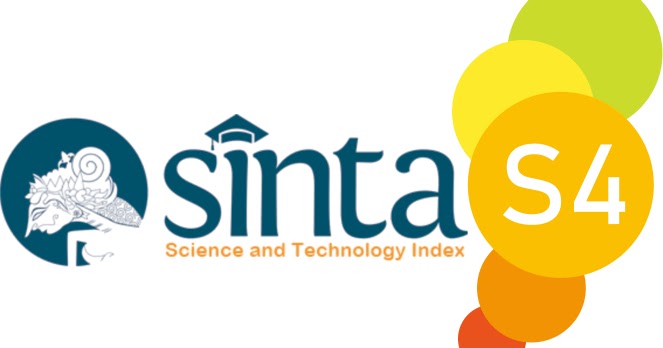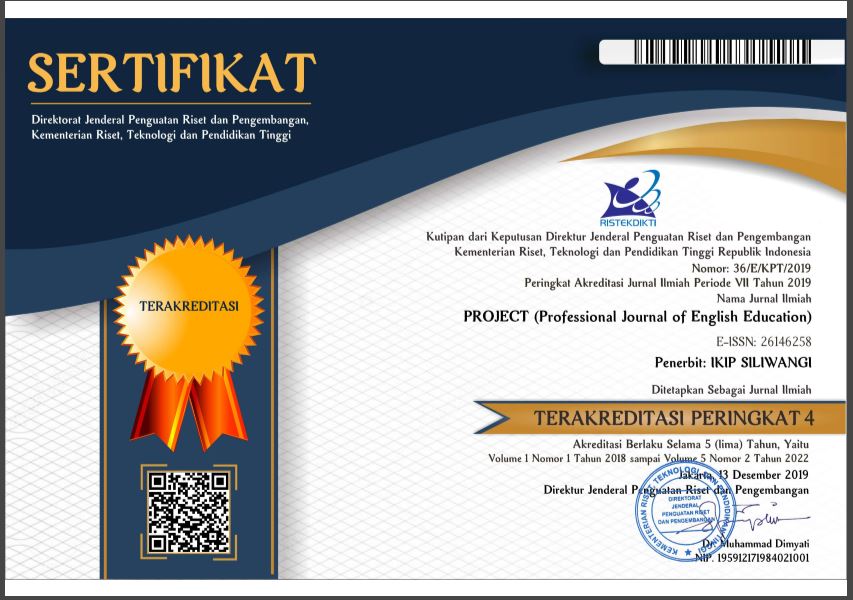The Effectiveness of Blended Learning in Essay Writing Class for English Education Study Program
Abstract
This study investigated the effectiveness of blended learning in improving essay writing skills among English Education Study Program students at Santo Agustinus Hippo Catholic University in West Kalimantan, Indonesia. Using an sequential experimental mixed-methods design, the study collected data from 26 third-semester students through pre-test, post-test, and semi-structured interviews. The blended learning approach applied a 30:70 ratio of face-to-face and online learning. Quantitative analysis demonstrated a substantial enhancement in students' essay writing proficiency (t = 14.392, p < 0.001), exhibiting considerable to substantial effect sizes in the introductory paragraph (Cohen's d = 1.83), concluding paragraph (d = 1.06), and paragraph unity and coherence (d = 2.53). Qualitative findings revealed that high-ability students thrived with flexibility and collaborative opportunities, while medium-ability students needed more structured guidance, and low-ability students experienced difficulties with self-regulation and technical barriers. This study suggests that blended learning can be an effective method for improving essay writing skills, even in resource-constrained environments, but requires differentiated support based on student ability levels.
References
Braun, V., & Clarke, V. (2019). Reflecting on reflexive thematic analysis. Qualitative Research in Sport, Exercise and Health, 11(4), 589–597. https://doi.org/10.1080/2159676X.2019.1628806
Cao, W. (2023). A meta-analysis of effects of blended learning on performance, attitude, achievement, and engagement across different countries. Frontiers in Psychology, 14. https://doi.org/10.3389/fpsyg.2023.1212056
Dziuban, C., Graham, C. R., Moskal, P. D., Norberg, A., & Sicilia, N. (2018). Blended learning: the new normal and emerging technologies. International Journal of Educational Technology in Higher Education, 15(1), 1–16. https://doi.org/10.1186/s41239-017-0087-5
Kintu, M. J., Zhu, C., & Kagambe, E. (2017). Blended learning effectiveness: the relationship between student characteristics, design features and outcomes. International Journal of Educational Technology in Higher Education, 14(1). https://doi.org/10.1186/s41239-017-0043-4
Lakens, D. (2013). Calculating and reporting effect sizes to facilitate cumulative science: A practical primer for t-tests and ANOVAs. Frontiers in Psychology, 4(NOV), 1–12. https://doi.org/10.3389/fpsyg.2013.00863
Rianto, A. (2020). Blended Learning Application in Higher Education: EFL Learners’ Perceptions, Problems, and Suggestions. IJELTAL (Indonesian Journal of English Language Teaching and Applied Linguistics), 5(1), 55. https://doi.org/10.21093/ijeltal.v5i1.574
Sankar, J. P., Kalaichelvi, R., Elumalai, K. V., & Alqahtani, M. S. M. (2022). Effective Blended Learning in Higher Education During Covid-19. Information Technologies and Learning Tools, 88(2), 214–228. https://doi.org/10.33407/itlt.v88i2.4438
Sewang, A. (2022). Blended learning effect towards Indonesian education students’ learning achievement. JPPI (Jurnal Penelitian Pendidikan Indonesia), 8(1), 161. https://doi.org/10.29210/020221287
Tabassum et al. (2024). The Impact of Blended Learning on Student Performance. Journal of Education and Social Studies, 91(292), 91–106. https://doi.org/10.1111/1475-4932.12155
Taber, K. S. (2018). The Use of Cronbach’s Alpha When Developing and Reporting Research Instruments in Science Education. Research in Science Education, 48(6), 1273–1296. https://doi.org/10.1007/s11165-016-9602-2
Taherdoost, H., & Group, H. (2017). Validity and Reliability of the Research Instrument ; How to Test the Validation of a Questionnaire / Survey in a Researchfile:///C:/Users/admin/Desktop/RISACHI REPORT 2021/reference B/2190-8050-1-PB-1 SOCIO.pdf. International Journal of Sport, Exercise & Training Sciences, 5(3), 27–36.
Tavakol, M., & Dennick, R. (2011). Making sense of Cronbach’s alpha. International Journal of Medical Education, 2, 53–55. https://doi.org/10.5116/ijme.4dfb.8dfd
Tawarik, O., Hendri, P., & Yonas, A. (2024). Correlation Between English Achievement , Vocabulary Mastery , and Self-Motivation Among Students 2 nd Semester in Institute Shanti Bhuana Bengkayang. 4(2), 156–185. https://doi.org/10.46229/elia.V4i2
Tawarik, O., Ikhsanudin, I., Wajdi, M., & Latip-Yusoph, S. (2021). Effect of CALLA metacognitive strategy instruction on reading comprehension and reading awareness. Journal of Applied Studies in Language, 5(2), 309–319. https://doi.org/10.31940/jasl.v5i2.309-319
Ursachi, G., Horodnic, I. A., & Zait, A. (2015). How Reliable are Measurement Scales? External Factors with Indirect Influence on Reliability Estimators. Procedia Economics and Finance, 20(15), 679–686. https://doi.org/10.1016/s2212-5671(15)00123-9
Zein, S., Sukyadi, D., Hamied, F. A., & Lengkanawati, N. S. (2020). English language education in Indonesia: A review of research (2011-2019). Language Teaching, 53(4), 491–523. https://doi.org/10.1017/S0261444820000208
Downloads
Published
Issue
Section
License

This work is licensed under a Creative Commons Attribution-ShareAlike 4.0 International License.




